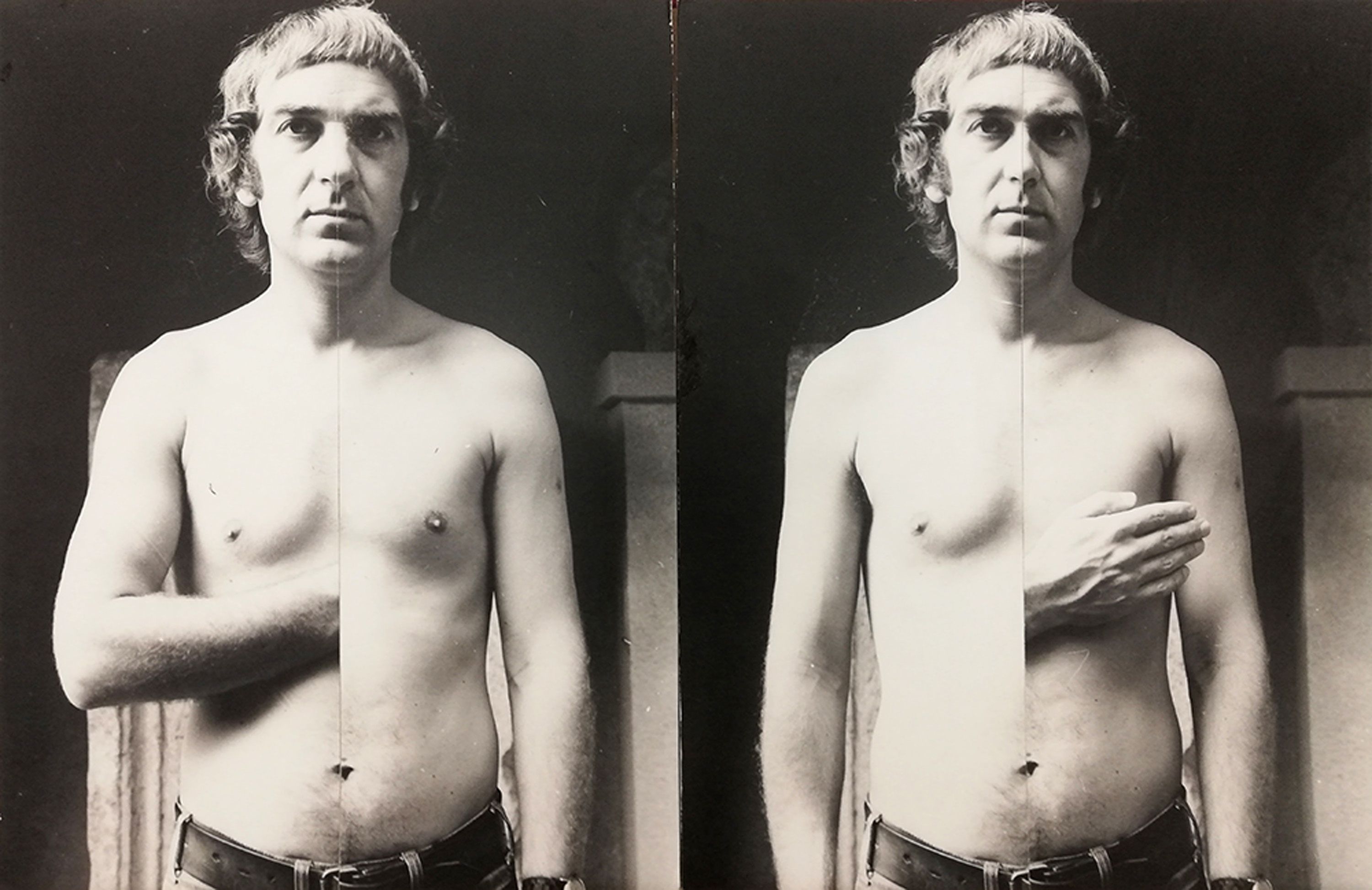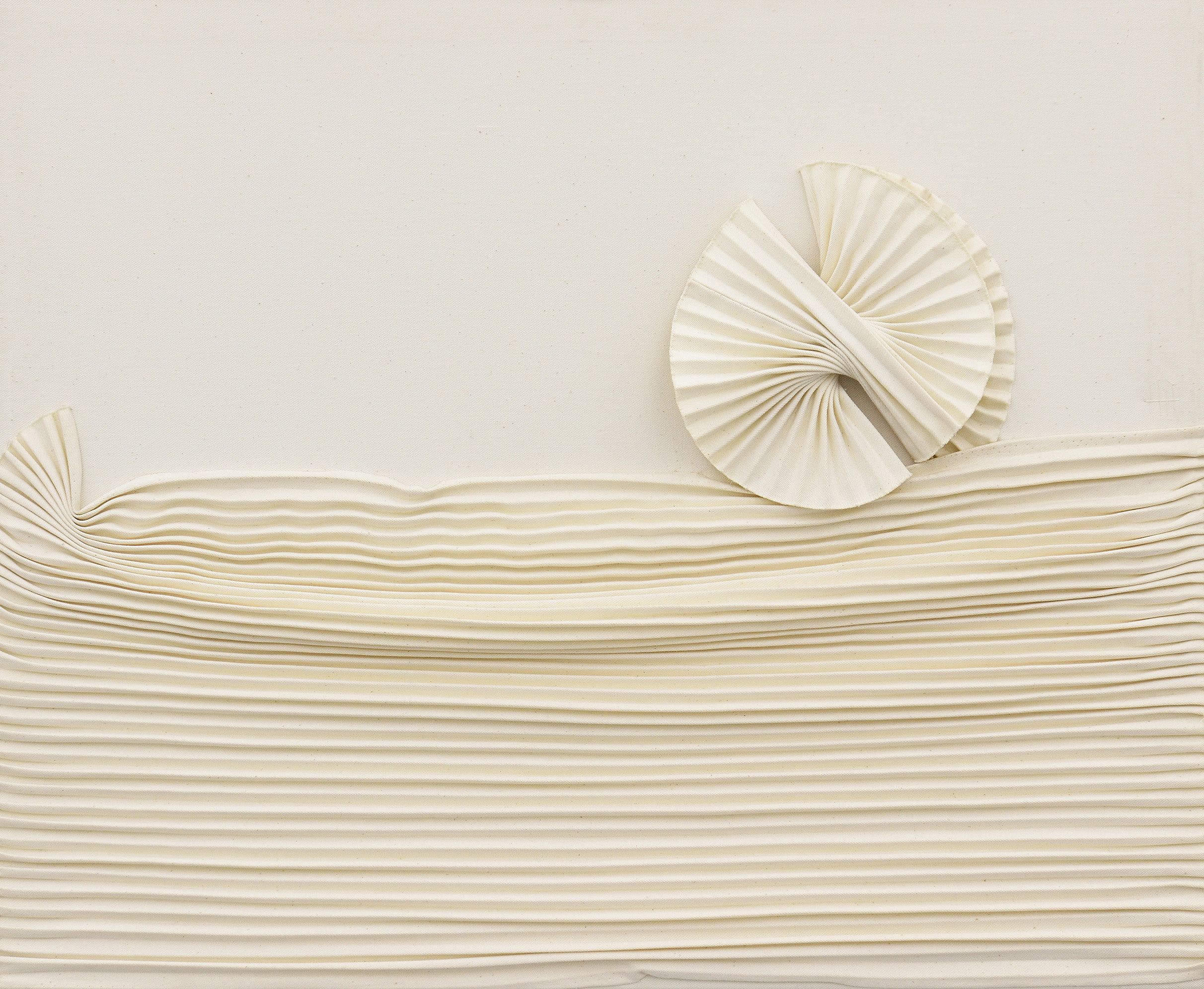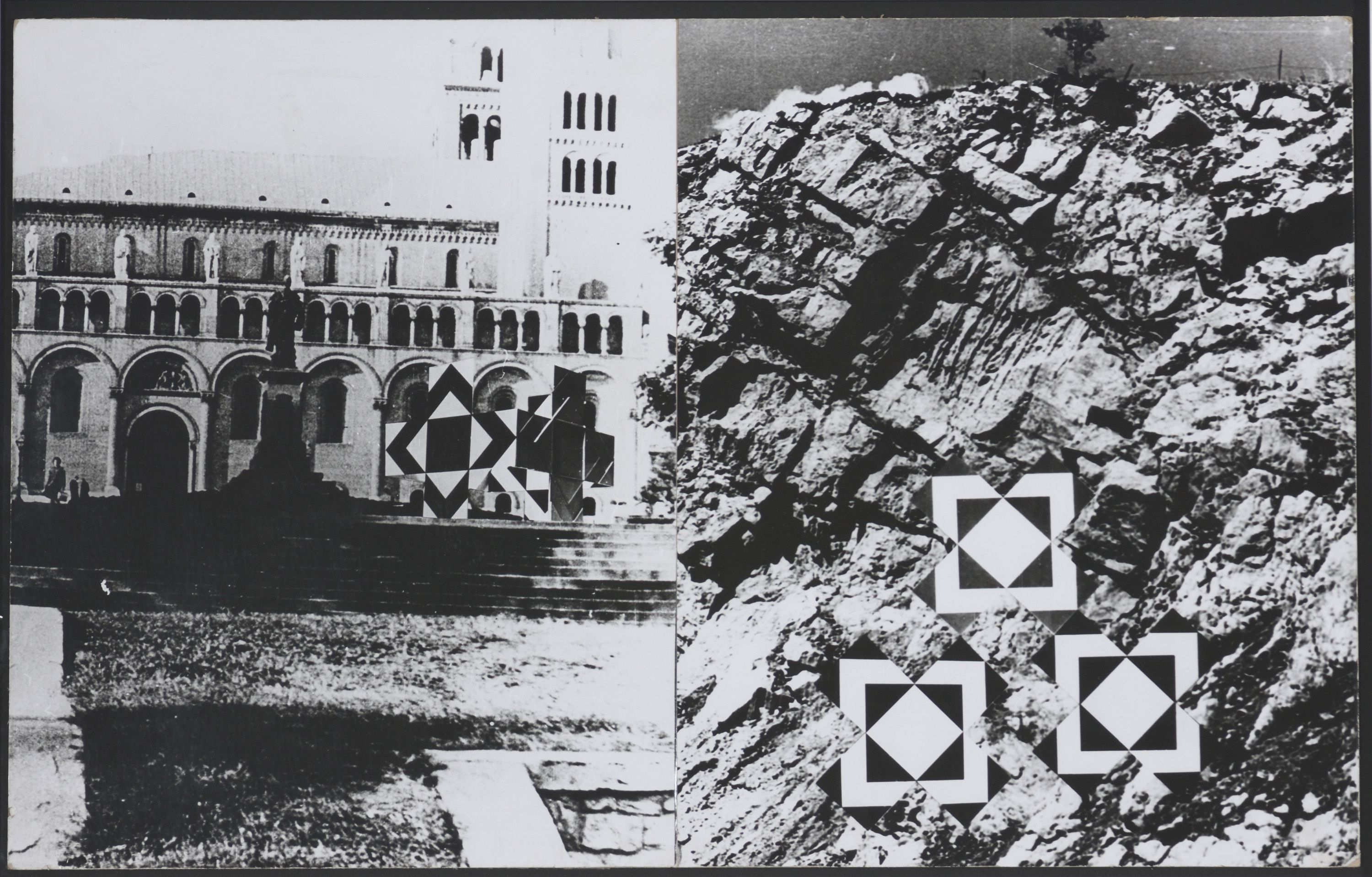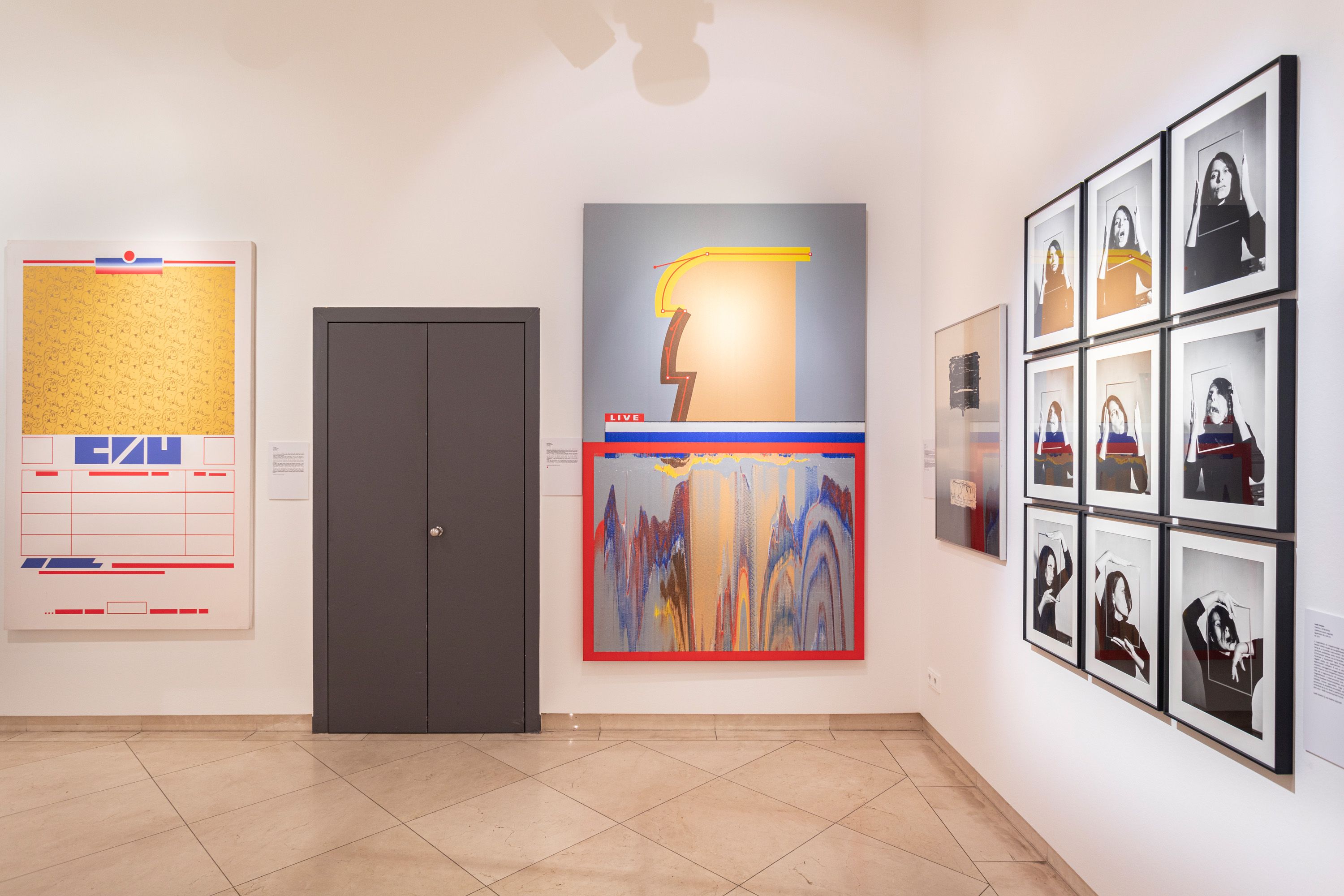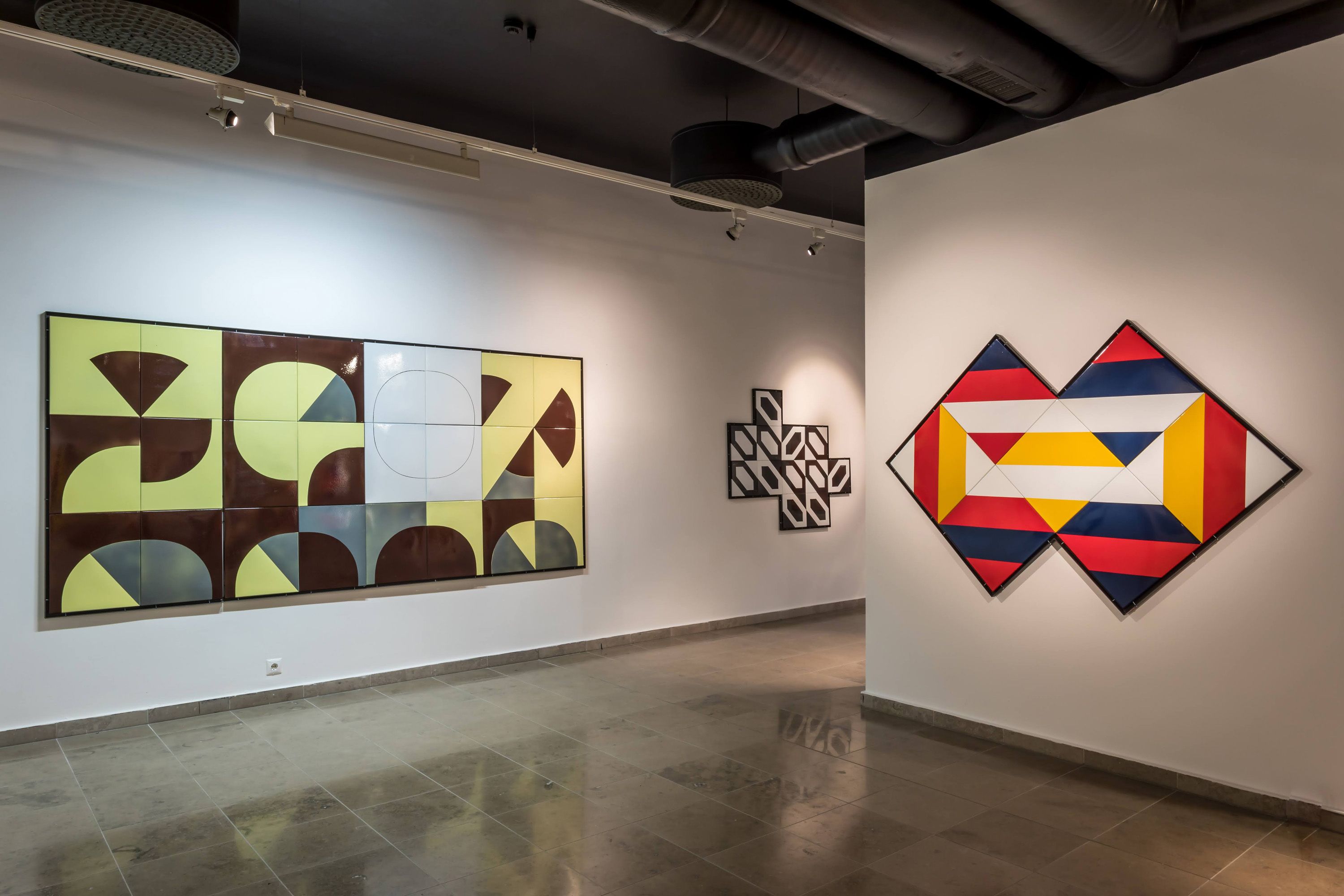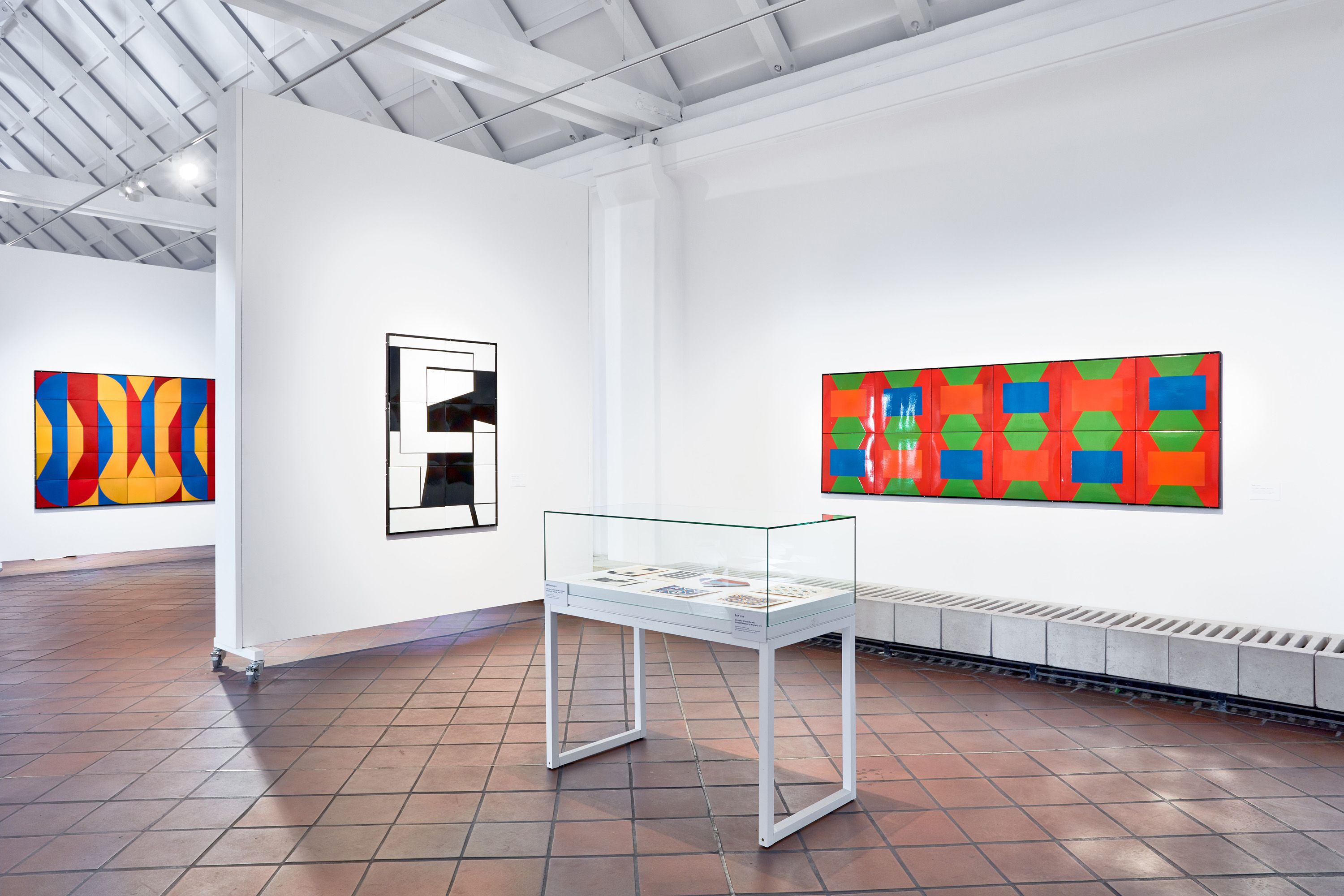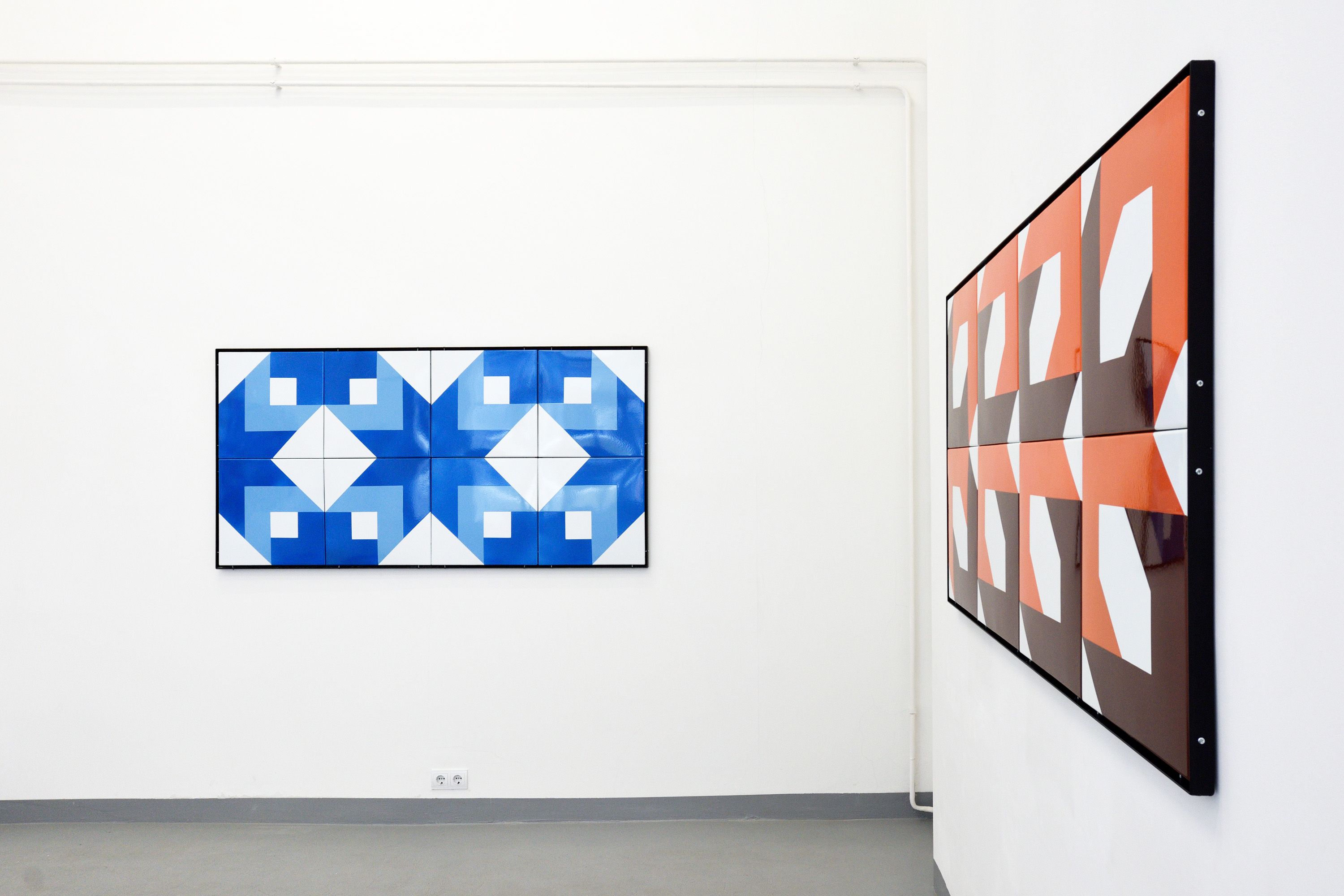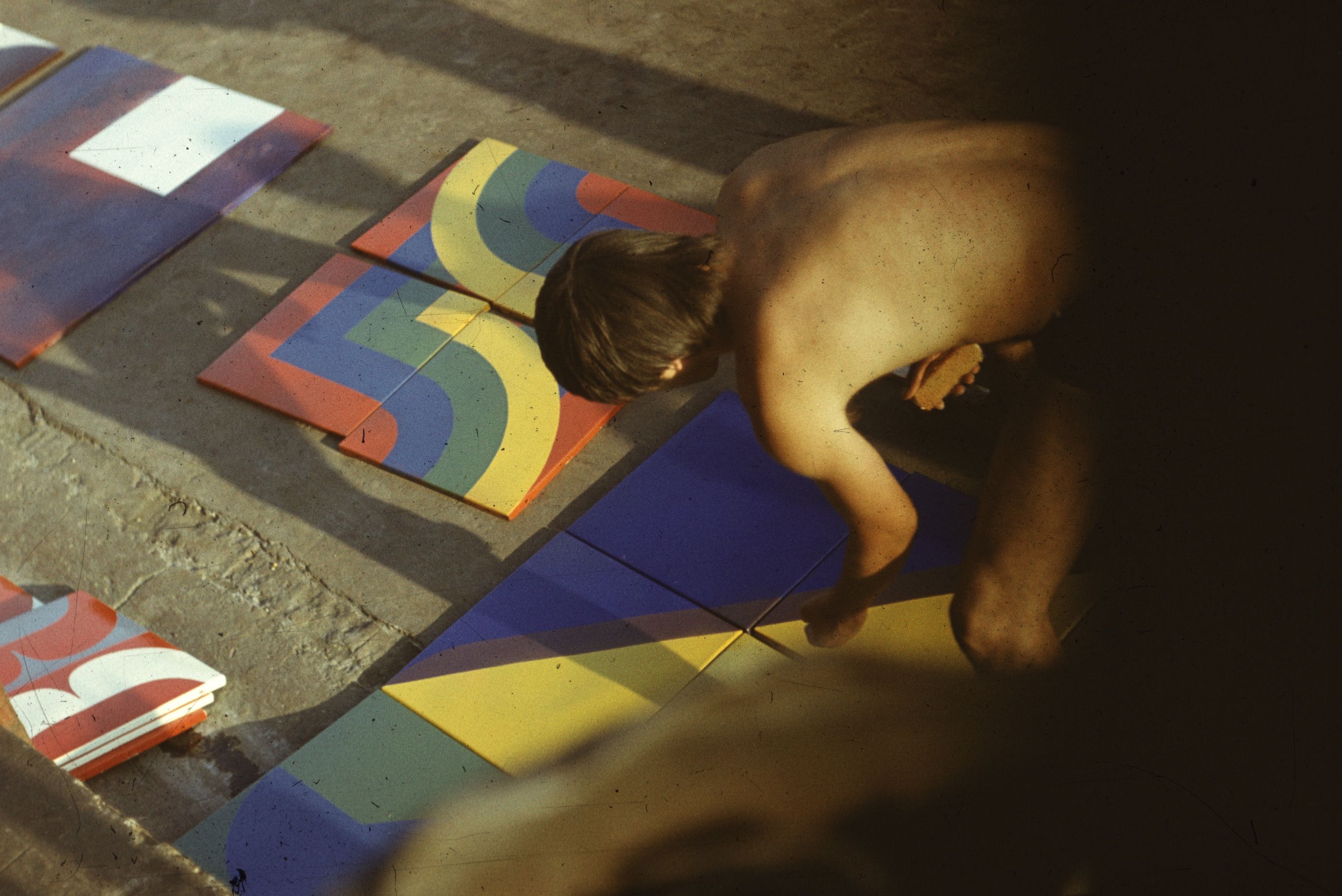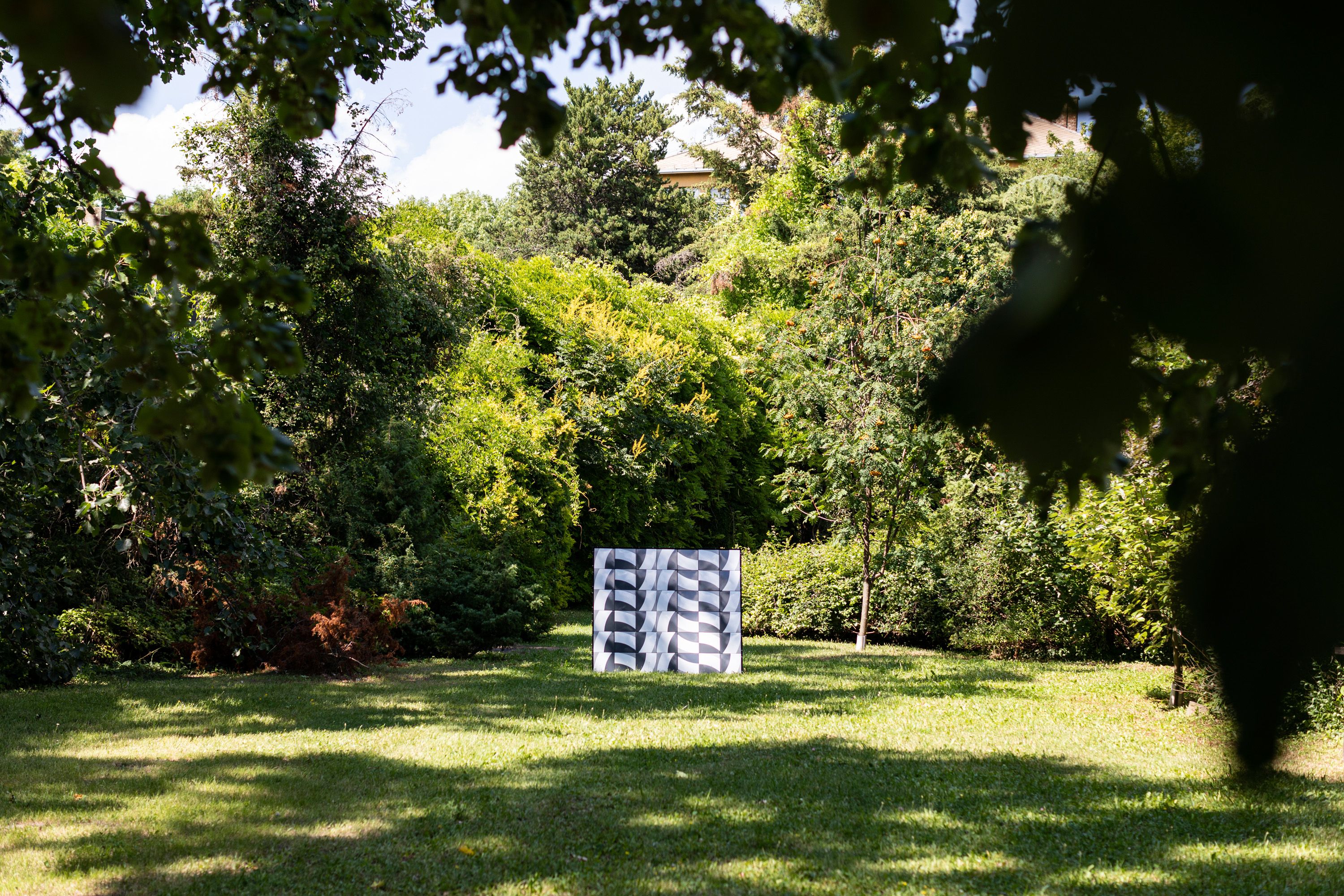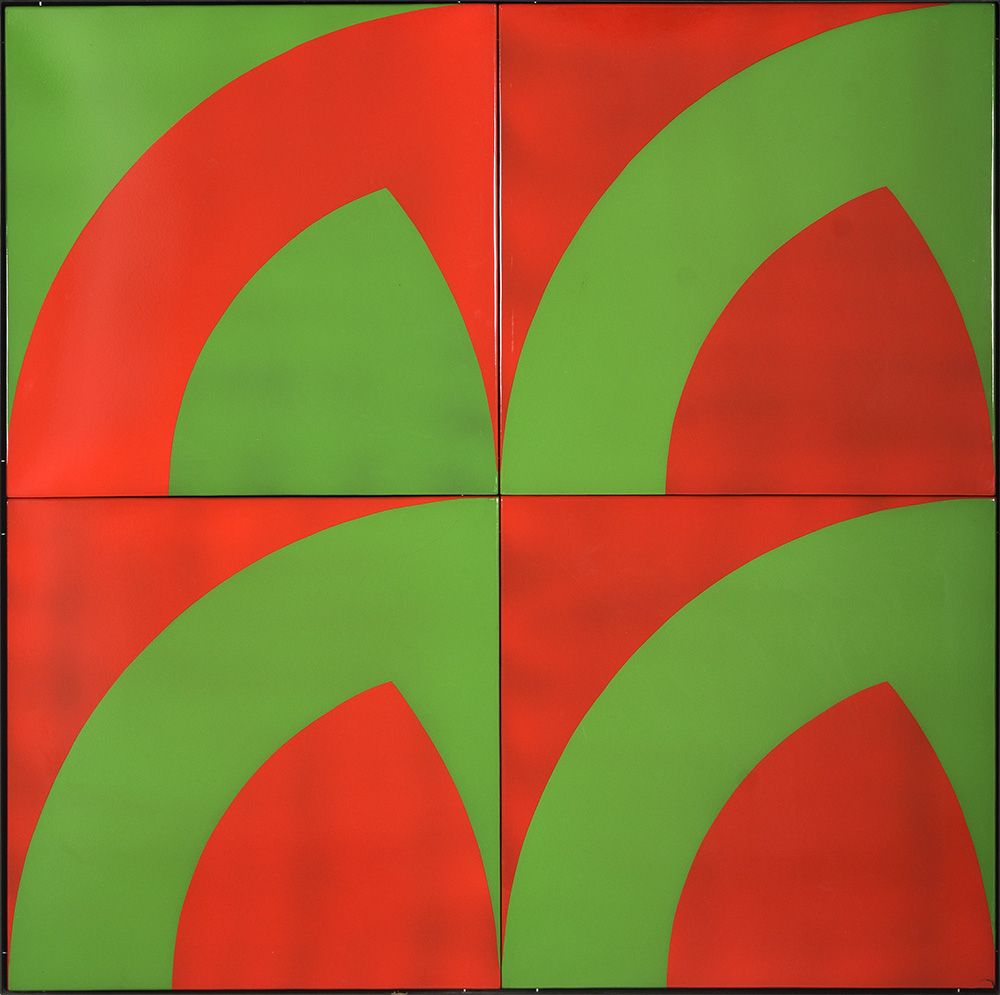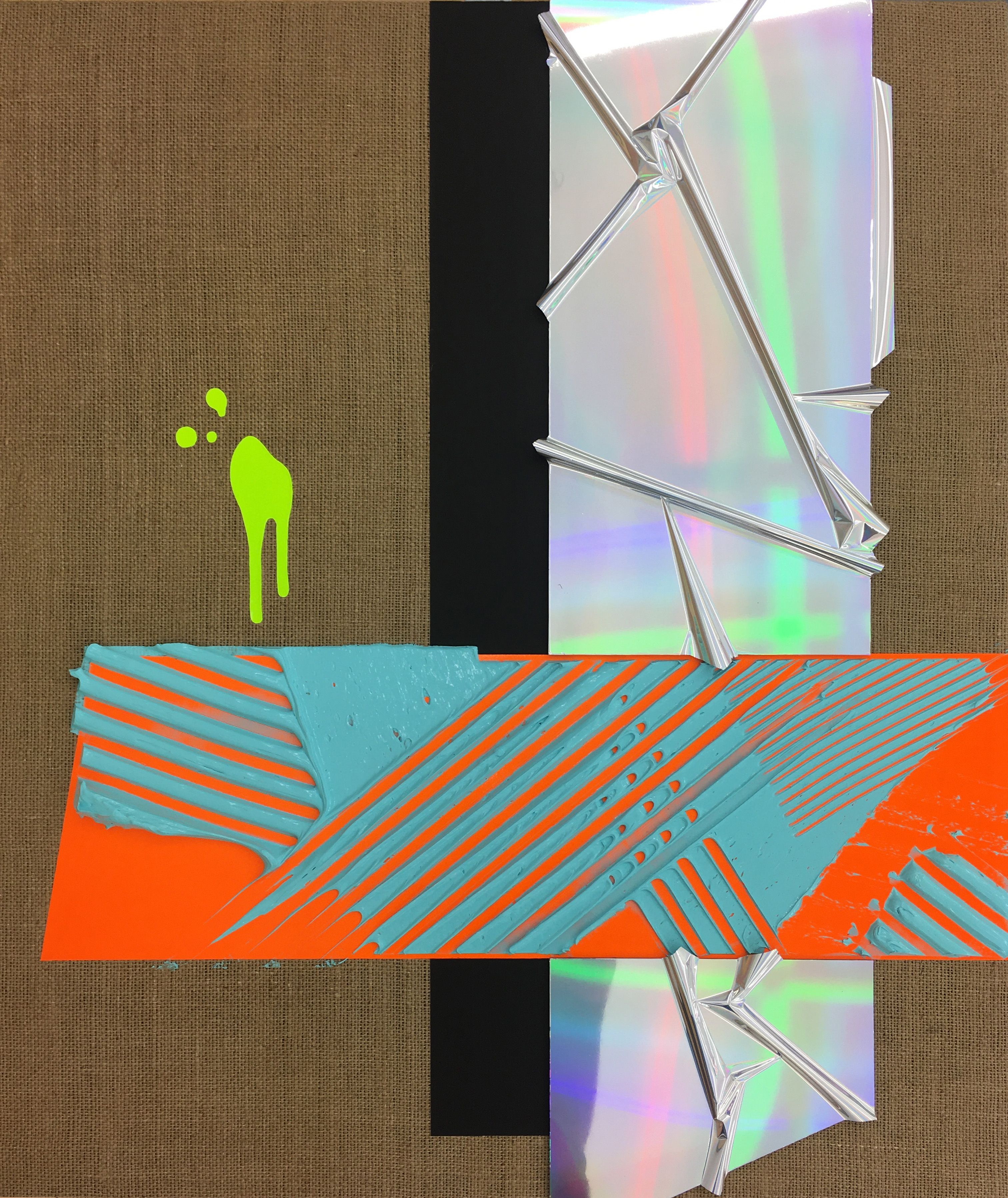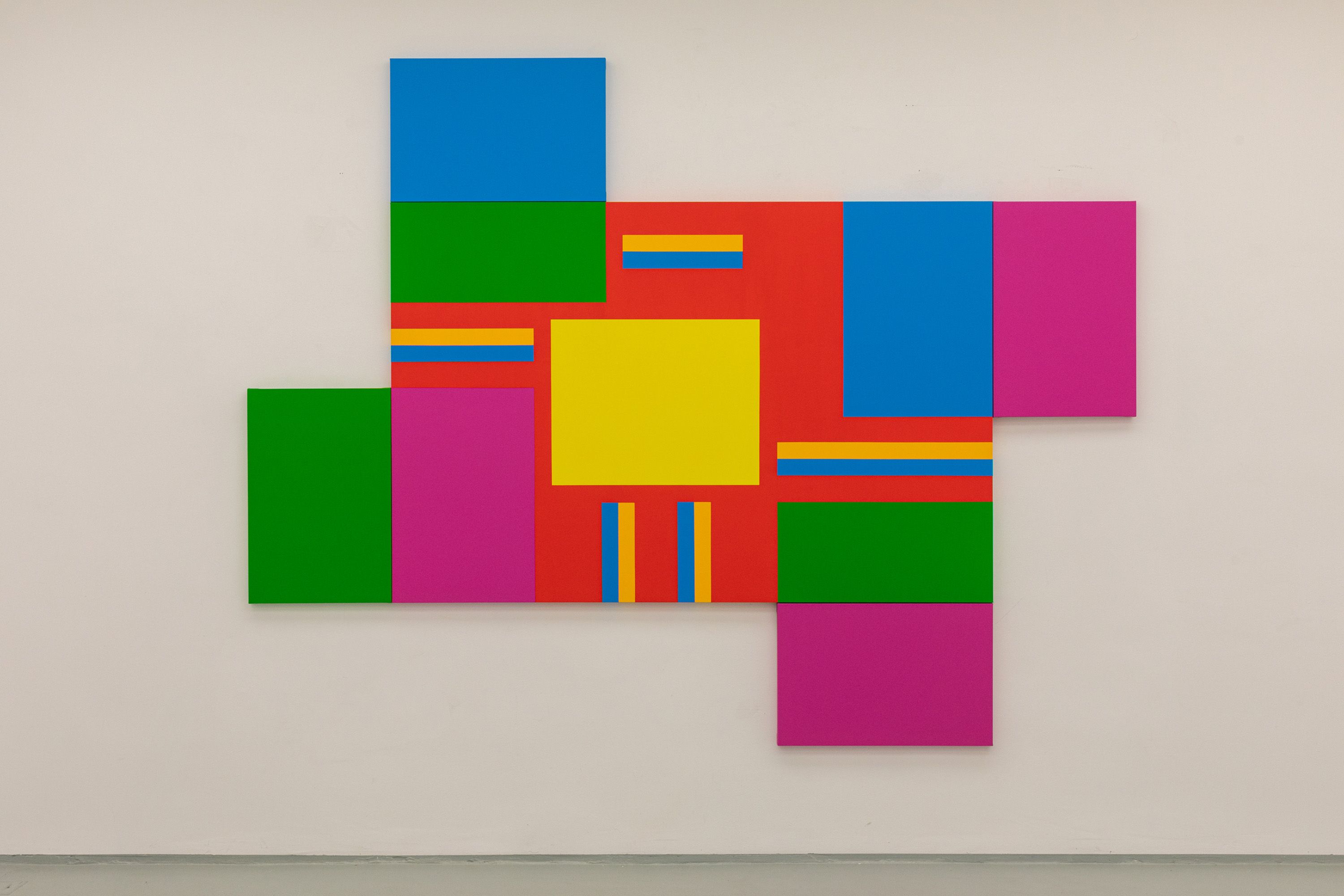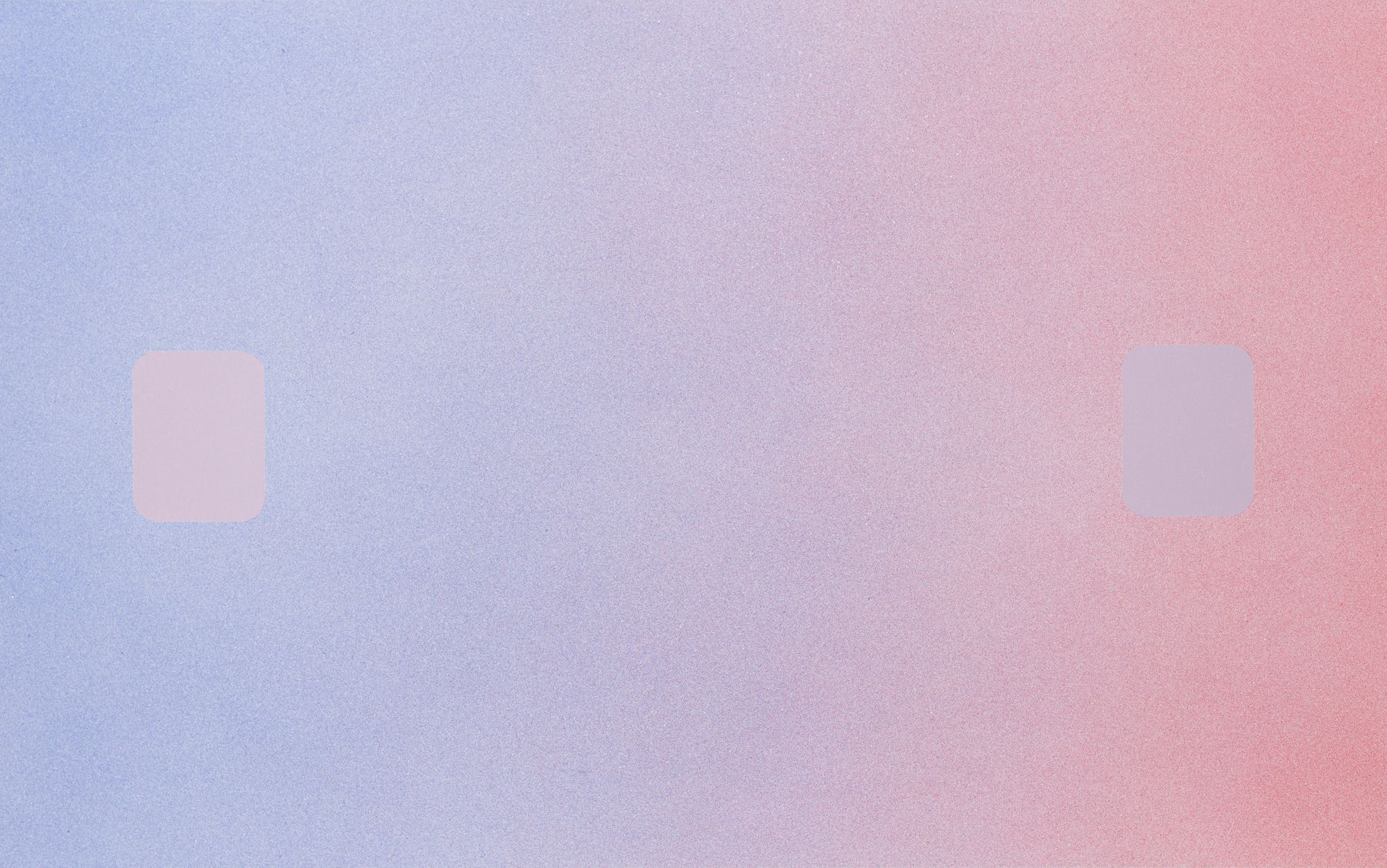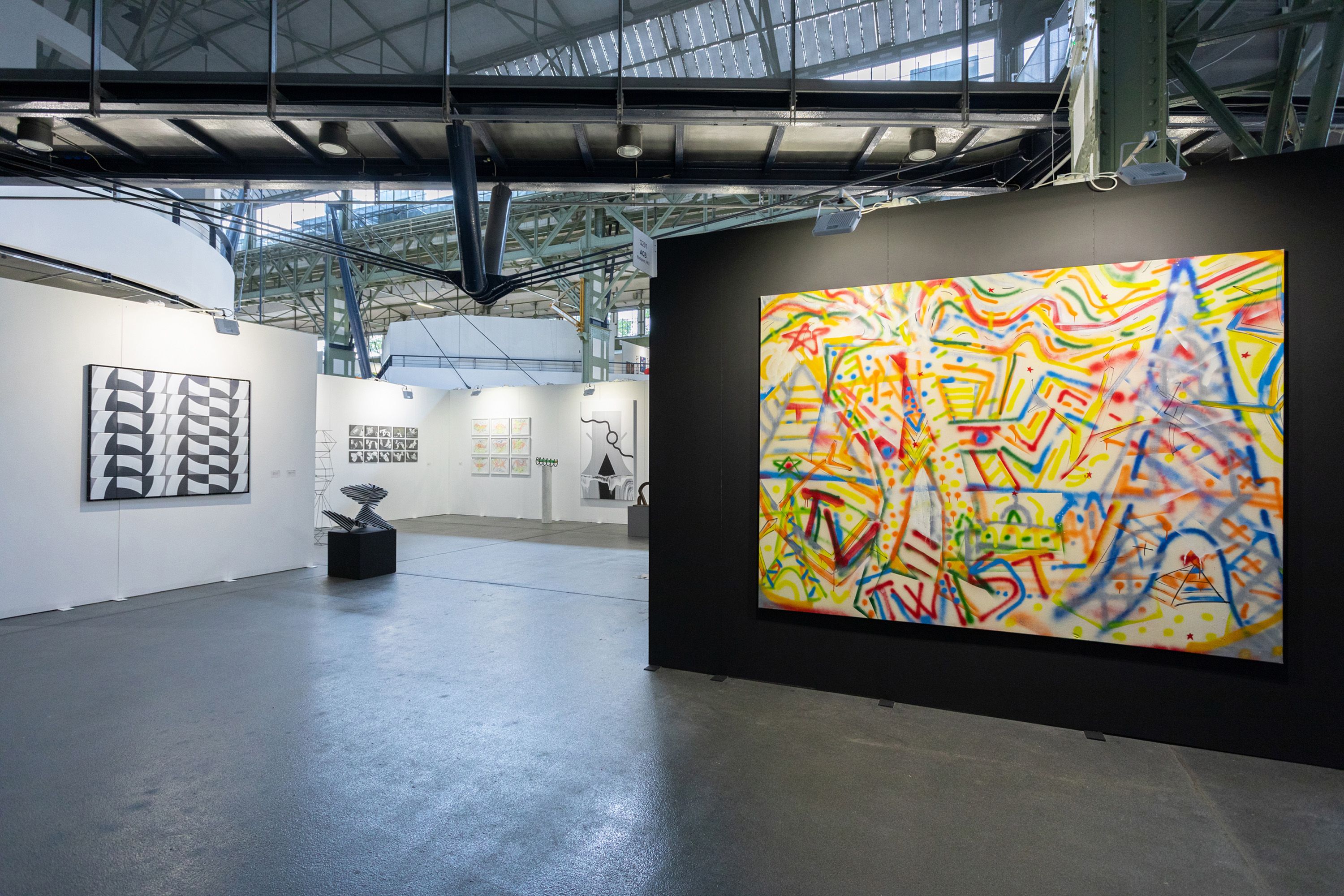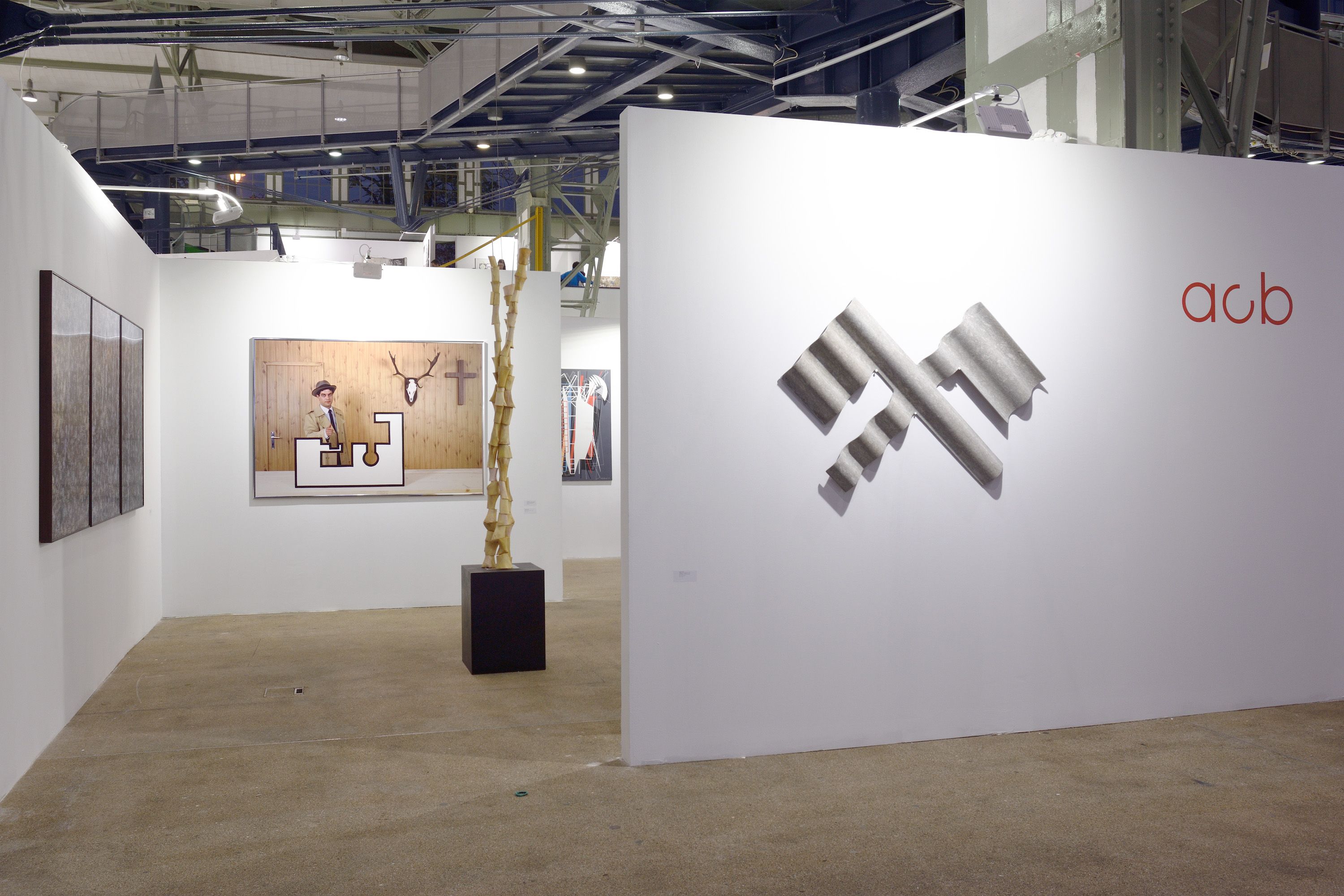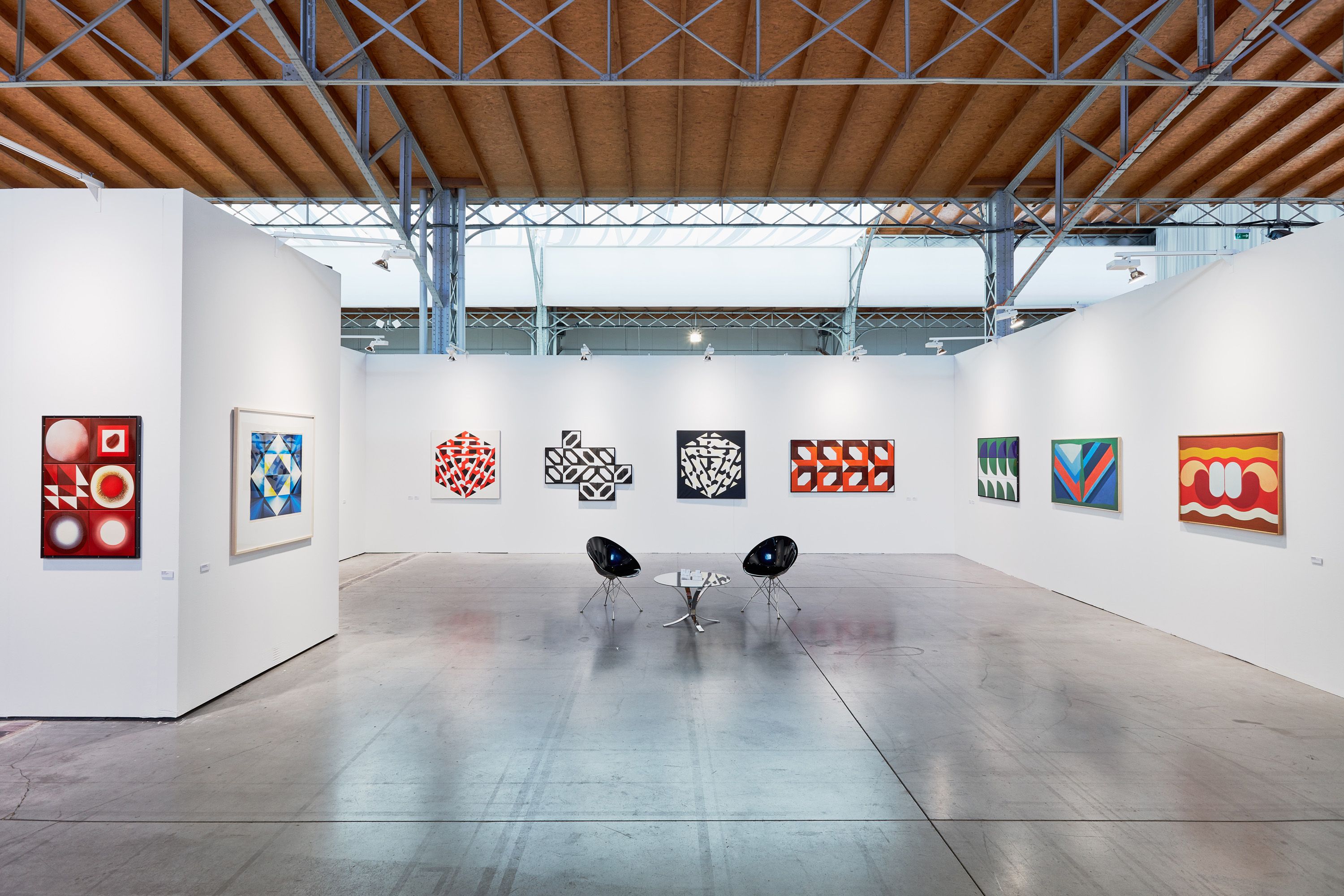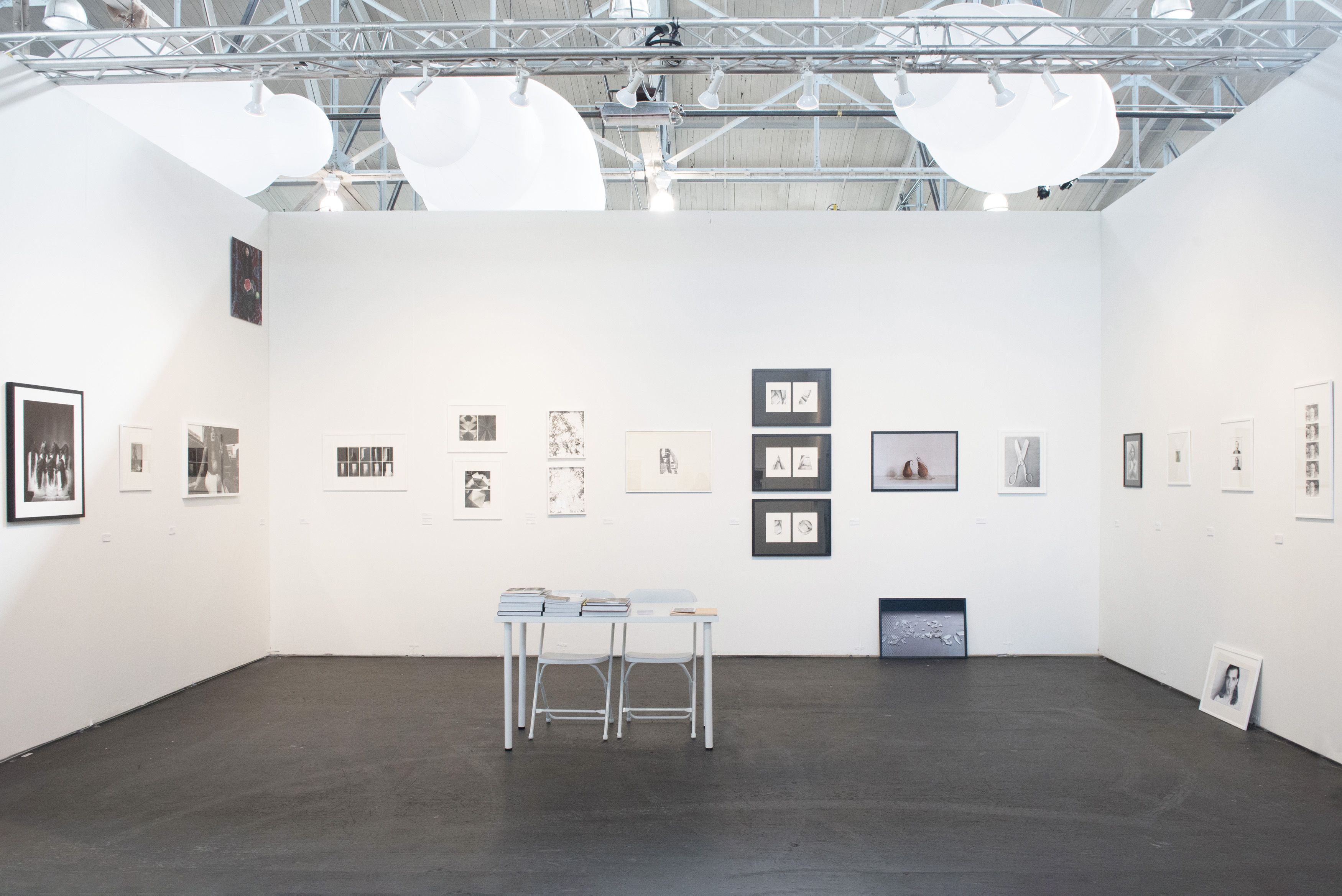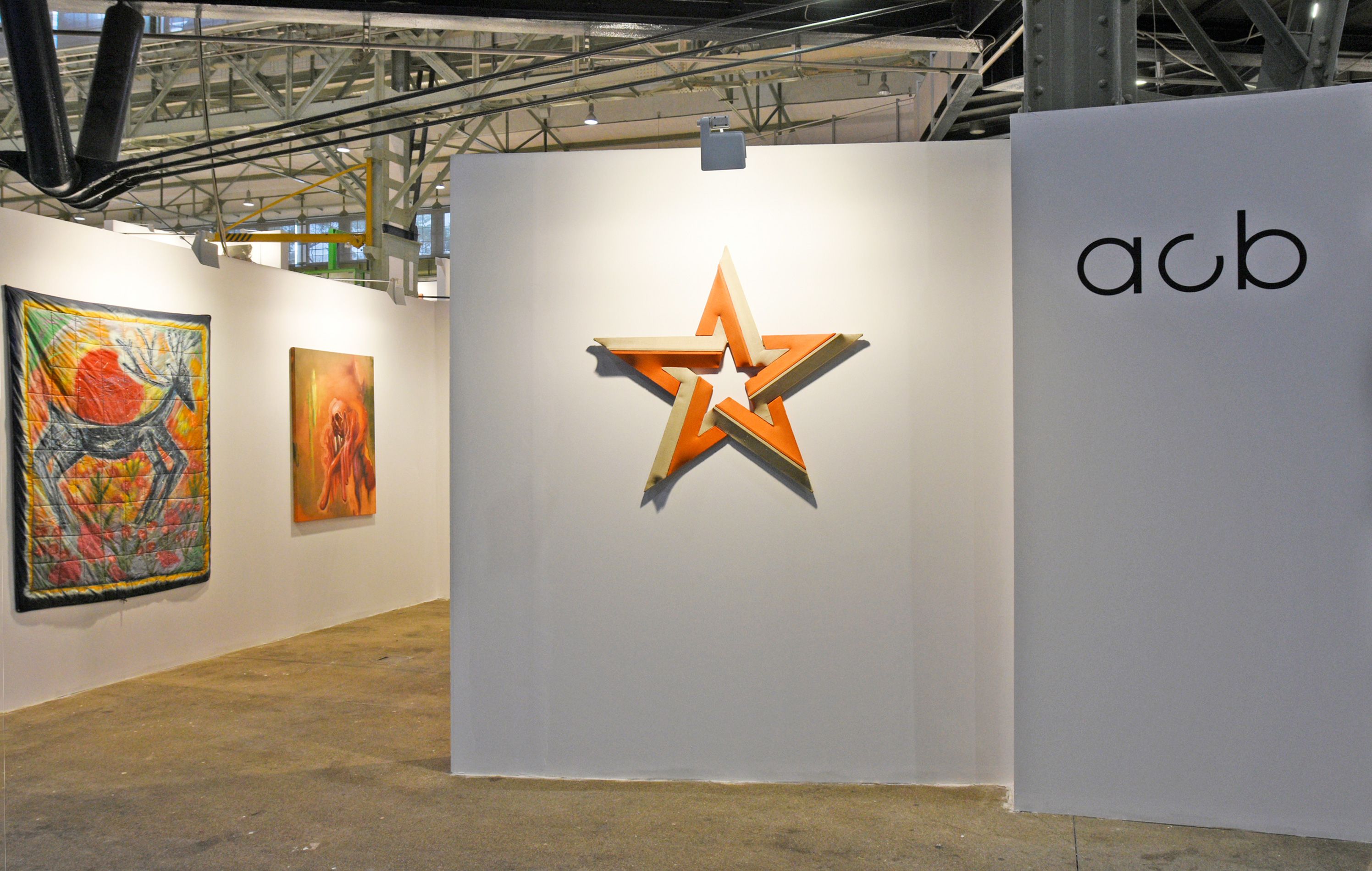Sándor Pinczehelyi
About the artist
Hungarian artist Sándor Pinczehelyi’s (1946) activity embraces graphic design, painting, photography, video, installation art as well as art education and curating. As a member of the Pécs Workshop, a significant Neo-avantgarde group (1970-1980), he contributed to the renewal of geometric abstraction in Hungary and experimented with land art and process art through photo-based works. He developed his characteristic set of visual patterns – the origins of his individual mythology developing to this day –, consisting of political emblems (cobblestone, hammer, sickle, star) in the early 70s. Pinczehelyi’s practice, similar to that of political pop and East Pop, ironically appropriated these symbols and changed their semantics by recontextialization. In the 80s Pinczehelyi took a more expressive, painterly approach and complemented his iconography with the colours of the Hungarian flag (red, white, green) and Hungarian agricultural products and animals. Besides paintings and prints, the RGW universe also resulted in installations, like at the Venice Biennale, where Pinczehelyi represented Hungary alongside Imre Bukta and Géza Samu in 1988. Together with the broadly applied Coca-Cola emblem, the RWG works imply an ironic and critical reflection on the complex relation between Western capitalism and socialist/post-socialist society.
